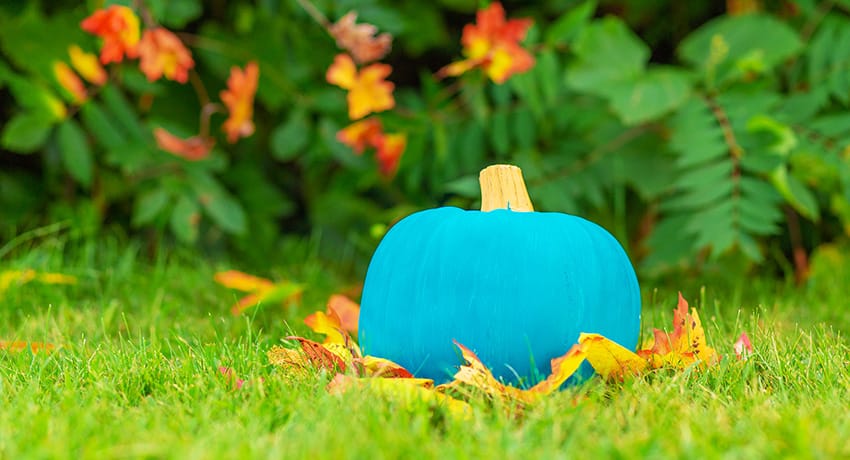Orange and black are traditionally associated with Halloween, but several other colors have entered the scene over the years, including teal, purple, blue, and pink. These hues are likely to represent more than a festive expression of the holiday.
Colored pumpkins
Various colors of pumpkins on the doorsteps of friends and neighbors can serve as signals to trick-or-treaters.
Teal, for example, means that the home offers non-food treats to children who stop by. It was a concept started by the Teal Pumpkin Project to bring awareness to children with food allergies. Instead of candy, these homes typically hand out small toys or other items.
Purple is another color that may represent something beyond ghoulish ghosts and goblins. The Purple Pumpkin Project began as a way to raise awareness of epilepsy. If a home has a purple pumpkin on the porch, it could mean that someone who lives there has epilepsy or they know how to help someone experiencing a seizure.
Pink also is a popular color throughout October in honor of Breast Cancer Awareness Month. If trick-or-treaters see a pink pumpkin on someone’s porch, it could mean someone living there is a survivor, is currently undergoing treatment, or has a loved one or friend who is a survivor.
Colored candy buckets
When children come to the door to trick-or-treat, they may use a variety of colored candy buckets.
If they have a teal bucket, for example, they may have a food allergy and cannot partake in the traditional candy treats on Halloween. Instead, they may want non-food treats like stickers, pencils, or bubbles.
Similar to purple pumpkins, if a child is carrying a purple candy pail, it may indicate they have epilepsy.
Finally, there is the blue bucket, which may signify that a child has autism. These trick-or-treaters may become easily overwhelmed by all the sights and sounds Halloween can bring. They also may be unable to say “trick-or-treat” or appear “too old.” The best way to handle these situations is with kindness and acceptance, as each child should have a fun and memorable Halloween.
“Using different colored pumpkins and candy buckets on Halloween is a great way for all children – no matter what disabilities or special needs they have – to feel included in the festivities,” said Gabriel Anzueto, MD, medical director of the Dan L Duncan Children’s Neurodevelopment Clinic at the Children’s Learning Institute at UTHealth Houston. “The different colors not only help children feel more included, but they also help raise awareness and educate the public on these different health conditions that are sometimes misunderstood.”
Embracing the concept of children using these different colored pumpkins and candy buckets gives Anzueto optimism that the public is becoming more accepting of a broader range of conditions.
“It’s important that we support conditions that are not only life-threatening but also ones that interfere with their quality of life, like autism. The simple gesture of recognizing a child with special needs on Halloween is a step in the right direction,” he said.



